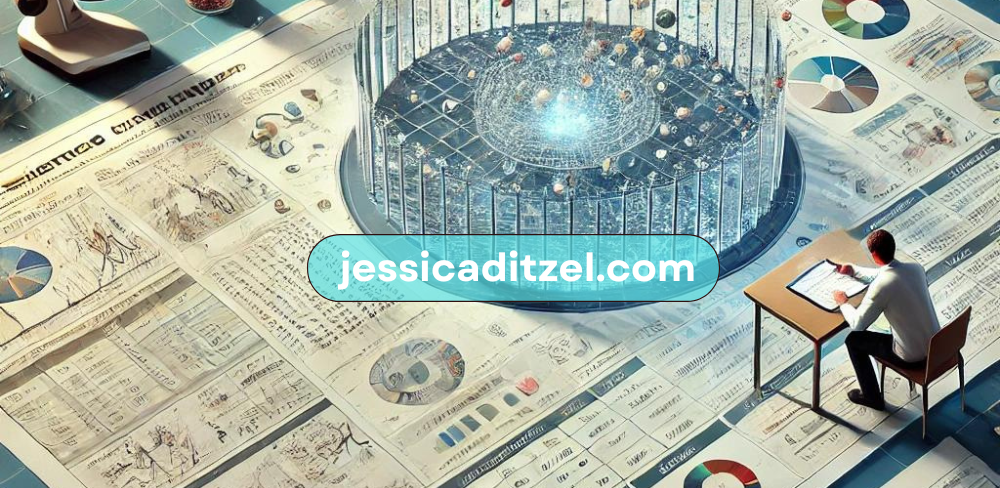When it comes to presenting scientific data in research papers, science.abj1541_table_captions plays a crucial role in ensuring clarity, organization, and ease of understanding for the readers. High-quality table captions are essential for guiding the reader through complex datasets, enhancing the readability of the content, and providing context to the information presented. In this comprehensive article, we will explore why science.abj1541_table_captions is vital, how to craft effective captions, and best practices to ensure your research is accessible and professional.
What Are science.abj1541_table_captions and Why Are They Important?
At the beginning of any scientific research paper or publication, it’s essential to provide a clear structure for data representation. science.abj1541_table_captions refers to the titles and descriptions that accompany tables in research papers, offering context and explanations for the data presented. A well-crafted table caption allows readers to understand the significance of the data without needing to dive into lengthy explanations within the text.
Effective science.abj1541_table_captions are more than just labels for tables. They provide essential information, help avoid misinterpretation of the data, and contribute to the overall flow of a research paper. For readers skimming through large amounts of content, captions act as quick references, helping them decide whether the table holds relevant information.
The Role of Clarity in science.abj1541_table_captions
Clarity is key when crafting science.abj1541_table_captions. A vague or incomplete caption can lead to confusion and diminish the impact of the data. Captions should be concise, yet descriptive enough to provide a clear understanding of what the table represents. Whether you’re summarizing key findings or explaining the experimental design, a strong caption enhances the value of the table.
How to Write Effective science.abj1541_table_captions
Writing strong science.abj1541_table_captions requires a balance between brevity and detail. Here are some best practices to ensure your table captions are effective:
- Be Descriptive but Concise: While it’s important to describe the table, avoid overloading the caption with unnecessary information. Keep it concise, yet informative.
- Highlight Key Results: Use the caption to point out any significant findings or trends that the table shows. This helps readers understand the relevance of the data at a glance.
- Provide Context: A well-written caption should give readers enough context to understand the data without needing to refer to other sections of the paper. Explain what the data represents and any important parameters.
- Use Technical Terms Appropriately: While it’s fine to use technical language in your science.abj1541_table_captions, make sure it aligns with the knowledge level of your audience. Overcomplicating the caption can alienate non-specialist readers.
By following these tips, you can ensure your science.abj1541_table_captions are both informative and accessible, improving the overall readability of your research paper.
Common Mistakes to Avoid When Crafting science.abj1541_table_captions
Despite their importance, table captions are often overlooked or not given the attention they deserve. Here are some common mistakes to avoid when creating science.abj1541_table_captions:
- Being Too Vague: A vague caption, such as “Results” or “Data,” doesn’t provide any insight into what the table actually shows. Be specific about the content and purpose of the table.
- Overloading with Information: While it’s important to be descriptive, avoid turning the caption into a paragraph. Captions should enhance the table, not overwhelm the reader.
- Skipping Important Details: Captions should provide all necessary context for interpreting the data. Failing to mention key aspects, such as units of measurement or variables, can confuse the reader.
- Inconsistent Formatting: Maintaining consistency in the style and formatting of your captions helps maintain professionalism. Always check for alignment with the journal or publication’s guidelines on table captions.
Avoiding these pitfalls will help you craft clear, impactful science.abj1541_table_captions that effectively support your research.
The Impact of science.abj1541_table_captions on Data Interpretation
The primary purpose of science.abj1541_table_captions is to facilitate the interpretation of data. Research papers often include complex datasets, and the captions play a crucial role in guiding readers through the material. Without well-written captions, readers may struggle to understand the significance of the data, especially when tables contain multiple variables or comparisons.
In particular, captions can help:
- Clarify Data Relationships: If a table is comparing different groups or conditions, the caption can clarify these relationships, helping the reader make sense of the data.
- Highlight Trends or Anomalies: While the table itself presents raw data, the caption can highlight any trends, patterns, or unexpected results, giving the reader a head start in interpreting the information.
- Aid in Quick Reference: When readers need to refer back to your tables, well-written captions help them quickly find the data they’re looking for, making your research more user-friendly.
Best Practices for Formatting science.abj1541_table_captions
Ensuring that your science.abj1541_table_captions are formatted correctly is essential for the professionalism of your research paper. Different journals and institutions may have their own guidelines for formatting, but there are some general best practices to follow:
- Positioning: Table captions are usually placed above the table itself, allowing the reader to read the caption before looking at the data. This helps set the context.
- Use of Punctuation: Ensure that punctuation is used consistently and appropriately. Captions should typically be written in sentence case, with only the first word and proper nouns capitalized.
- Font and Style: Follow the journal’s or institution’s guidelines on font size, style, and any special formatting for table captions. This ensures uniformity and adherence to academic standards.
Examples of Effective science.abj1541_table_captions
To further understand how to craft high-quality science.abj1541_table_captions, let’s look at a few examples:
- Basic Example: “Table 1. Mean values of temperature and humidity across different experimental conditions. Data collected over a period of 30 days.”
- Comparative Example: “Table 2. Comparison of survival rates between treatment and control groups after 60 days of exposure to the experimental drug. Results are shown as mean ± standard deviation.”
- Complex Example: “Table 3. Interaction effects between two independent variables, A and B, on the growth rate of species X under varying light conditions. The table shows the mean growth rate (cm/day) for each condition.”
These examples illustrate how science.abj1541_table_captions can vary in length and detail depending on the complexity of the table. Regardless of the table’s complexity, the caption should always provide the necessary information for interpreting the data accurately.
The Future of science.abj1541_table_captions in Digital Research
As the field of research continues to evolve, science.abj1541_table_captions will likely play an even more prominent role in digital publications. With the rise of interactive data visualizations, dynamic tables, and multimedia elements, table captions will need to adapt to provide even more concise and accurate descriptions.
In the future, we can expect to see:
- Interactive Captions: Some journals may start incorporating interactive elements into their captions, allowing readers to click on specific data points for more detailed information.
- AI-Generated Captions: With advancements in AI and machine learning, it’s possible that future software will assist researchers in generating accurate and effective science.abj1541_table_captions automatically based on the table data.
By staying up to date with these advancements, researchers can continue to improve how they present data and ensure that their research remains accessible and impactful.
Conclusion: Mastering the Art of science.abj1541_table_captions for Better Data Presentation
In scientific research, the presentation of data is just as important as the data itself. science.abj1541_table_captions play a vital role in making sure that the information within tables is clear, understandable, and accessible to a wide audience. By following best practices and avoiding common pitfalls, you can ensure that your table captions enhance your research paper’s readability and effectiveness.
Whether you’re a seasoned researcher or new to academic writing, crafting high-quality science.abj1541_table_captions should be a priority in every publication. The better your captions, the easier it is for readers to engage with and interpret your findings.
Call to Action:
Ensure your research papers stand out with clear and concise science.abj1541_table_captions. Start implementing these strategies in your next project and see the difference in reader engagement and understanding!











